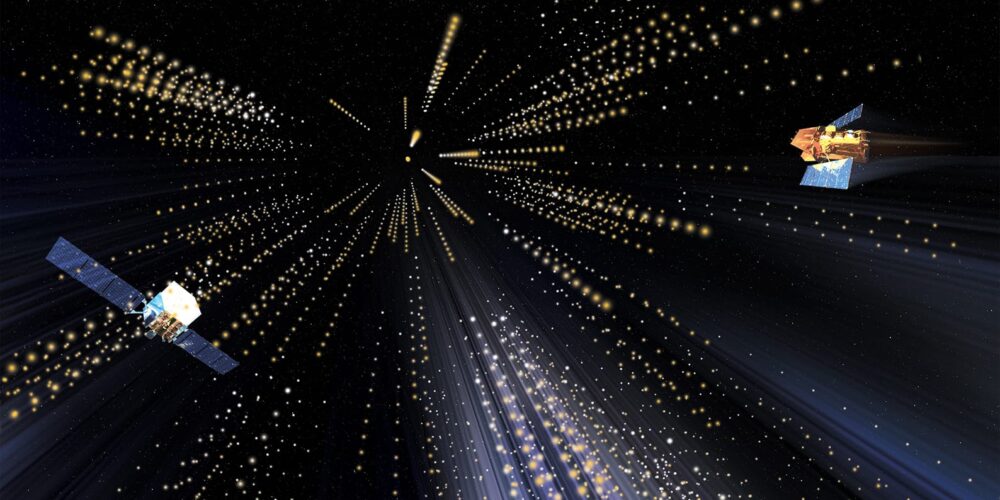MAGIC telescopes see most epic explosion

A violent explosion in a distant galaxy has broken the record for the brightest source of high-energy light in the Universe.
The light was emitted by a gamma ray burst, a brief but powerful cosmic explosion in a galaxy seven billion light years away.
The research involved more than 300 scientists from around the world, and was published today in the journal Nature.
Astronomer and co-author Dr Gemma Anderson, from the Curtin University node of the International Centre for Radio Astronomy Research, said gamma ray bursts are among the most powerful explosions in the Universe.
“They are likely produced by a massive star being blown apart in a supernova, with the resulting explosion leaving behind a black hole,” she said.
“A typical burst releases as much energy in a few seconds as the Sun will in its entire 10-billion-year lifetime.”
Dr Anderson said gamma ray bursts appear in the sky without warning, about once per day.
“The bursts themselves usually only last a few seconds,” she said.
“But they have an afterglow that can be observed by telescopes like MAGIC for several minutes, and by radio telescopes for months or even years.”
On January 14, 2019, a gamma ray burst was detected by two space satellites—the Neil Gehrels Swift Observatory and the Fermi Gamma-ray Space Telescope.
It was named GRB 190114C and, within 22 seconds, its coordinates were sent to astronomers around the world.
Among them were the operators of the twin Major Atmospheric Gamma Imaging Cherenkov (MAGIC) telescopes in the Canary Islands.
MAGIC collaboration spokesperson Dr Razmik Mirzoyan said the two 64-ton telescopes were pointed towards the gamma ray burst within 27 seconds.
“The telescopes were able to observe the burst within 50 seconds of it appearing in the sky,” he said.
In the first seconds after they started observing, the MAGIC telescopes detected particles of light—or photons—from the afterglow that clocked in at between 0.2 and 1 teraelectron volts (TeV).
That’s equivalent to the amount of energy released by proton collisions in the Large Hadron Collider, the most powerful particle accelerator on Earth.
Dr Anderson said it is the first time such high-energy radiation has been detected from a gamma ray burst.
“It’s a trillion times more energetic than visible light,” she said.
“It makes GRB 190114C the brightest known source of TeV photons in the Universe.”
The gamma ray burst was followed up by telescopes around the world, to pinpoint where the burst had originated from and its physical attributes.
That included observations of radio waves by Dr Anderson and collaborators in Australia and around the world, using the Australia Telescope Compact Array (ATCA).
Dr Anderson said the high-energy light was likely caused by the blast wave of material from the gamma ray burst hitting the surrounding environment.
“The photons probably weren’t generated in the explosion itself,” she said.
MAGIC (Major Atmospheric Gamma Imaging Cherenkov) is an international collaboration involving 165 researchers (physicists and engineers) from 24 research institutions in 11 countries.



